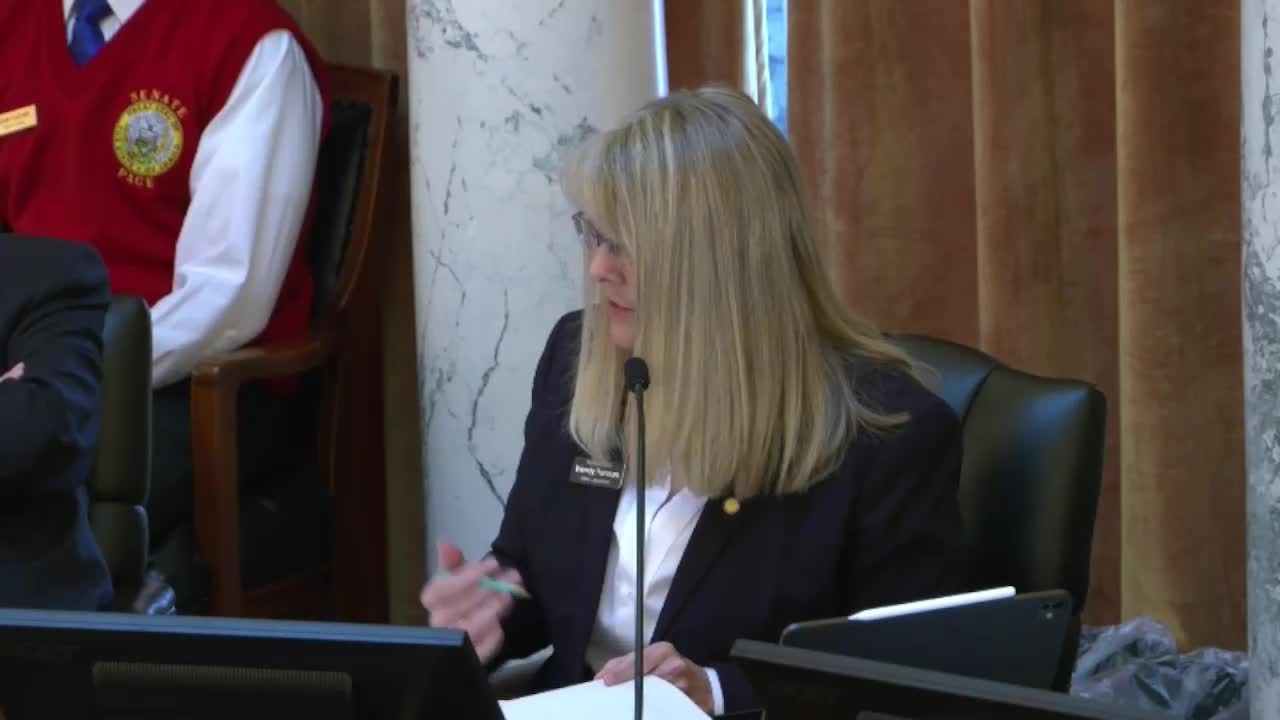Idaho budget committee debates $400M spending increase amid calls for greater tax relief
January 07, 2025 | 2025 Joint Legislative Sessions, 2025 Legislative Sessions, Idaho
This article was created by AI summarizing key points discussed. AI makes mistakes, so for full details and context, please refer to the video of the full meeting. Please report any errors so we can fix them. Report an error »

Idaho's Joint Finance-Appropriations Committee convened on January 7, 2025, to discuss significant budget proposals that could reshape state spending and services. A key focus of the meeting was the proposed budget increase of 7.4%, a notable rise from last year's 2.2% recommendation. This increase is attributed to various factors, including inflationary adjustments and a shift in how budgetary enhancements are categorized.
During the meeting, Ms. Wolf, a key budget official, explained that the budget's structure has changed, emphasizing a clearer distinction between maintenance costs and enhancements. The maintenance budget includes unavoidable contract inflationary adjustments, while enhancements are discretionary spending aimed at new growth. This year, the enhancement requests are projected at approximately $151 million, slightly higher than last year's $144 million.
Committee members raised concerns about the implications of increased spending, particularly in light of public sentiment regarding government growth. Representative Tanner questioned the balance between new spending and tax relief, highlighting a demand for more substantial tax cuts in response to constituents' concerns about government expenditure.
Another significant topic was the ongoing funding for fire suppression, with a proposed $40 million for 2026 following a one-time $60 million allocation in 2025. Ms. Wolf clarified that this funding aims to stabilize the fire suppression fund, ensuring preparedness for future fire seasons.
The meeting also addressed transportation funding, with a request for an additional $50 million to support ongoing projects. Ms. Wolf noted the importance of securing funds now to avoid delays in project planning and execution.
As the committee continues to deliberate on these budget proposals, the outcomes will have lasting implications for Idaho's fiscal health and the services provided to its residents. The discussions reflect a balancing act between addressing immediate needs and planning for future growth, underscoring the complexities of state budgeting in a changing economic landscape.
During the meeting, Ms. Wolf, a key budget official, explained that the budget's structure has changed, emphasizing a clearer distinction between maintenance costs and enhancements. The maintenance budget includes unavoidable contract inflationary adjustments, while enhancements are discretionary spending aimed at new growth. This year, the enhancement requests are projected at approximately $151 million, slightly higher than last year's $144 million.
Committee members raised concerns about the implications of increased spending, particularly in light of public sentiment regarding government growth. Representative Tanner questioned the balance between new spending and tax relief, highlighting a demand for more substantial tax cuts in response to constituents' concerns about government expenditure.
Another significant topic was the ongoing funding for fire suppression, with a proposed $40 million for 2026 following a one-time $60 million allocation in 2025. Ms. Wolf clarified that this funding aims to stabilize the fire suppression fund, ensuring preparedness for future fire seasons.
The meeting also addressed transportation funding, with a request for an additional $50 million to support ongoing projects. Ms. Wolf noted the importance of securing funds now to avoid delays in project planning and execution.
As the committee continues to deliberate on these budget proposals, the outcomes will have lasting implications for Idaho's fiscal health and the services provided to its residents. The discussions reflect a balancing act between addressing immediate needs and planning for future growth, underscoring the complexities of state budgeting in a changing economic landscape.
View full meeting
This article is based on a recent meeting—watch the full video and explore the complete transcript for deeper insights into the discussion.
View full meeting